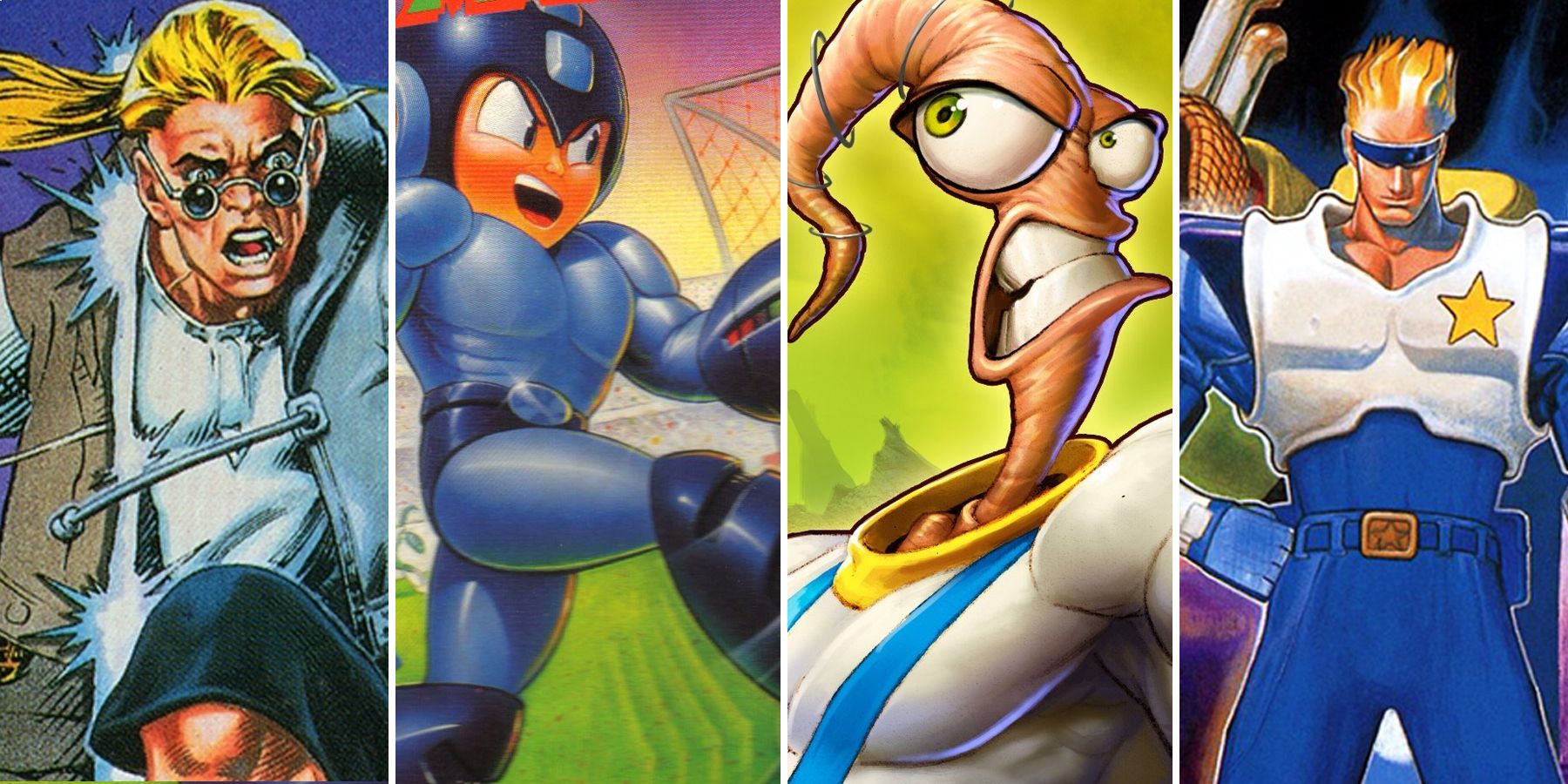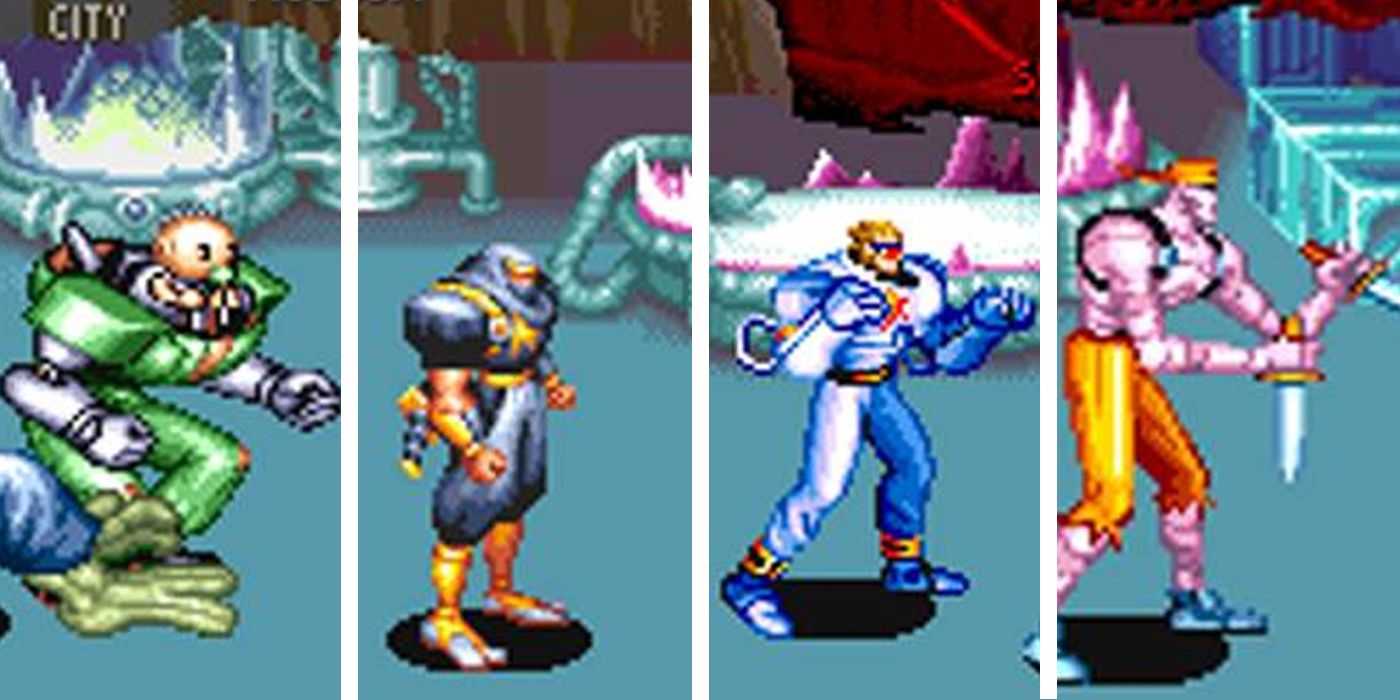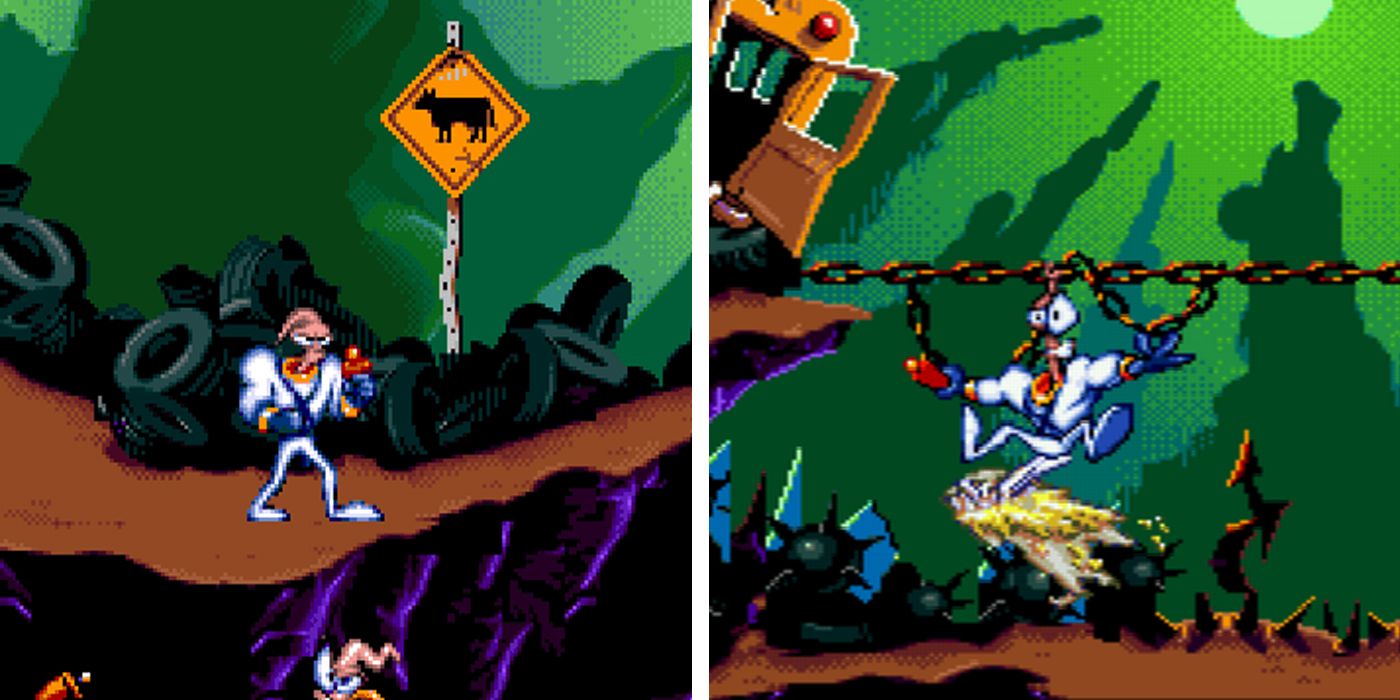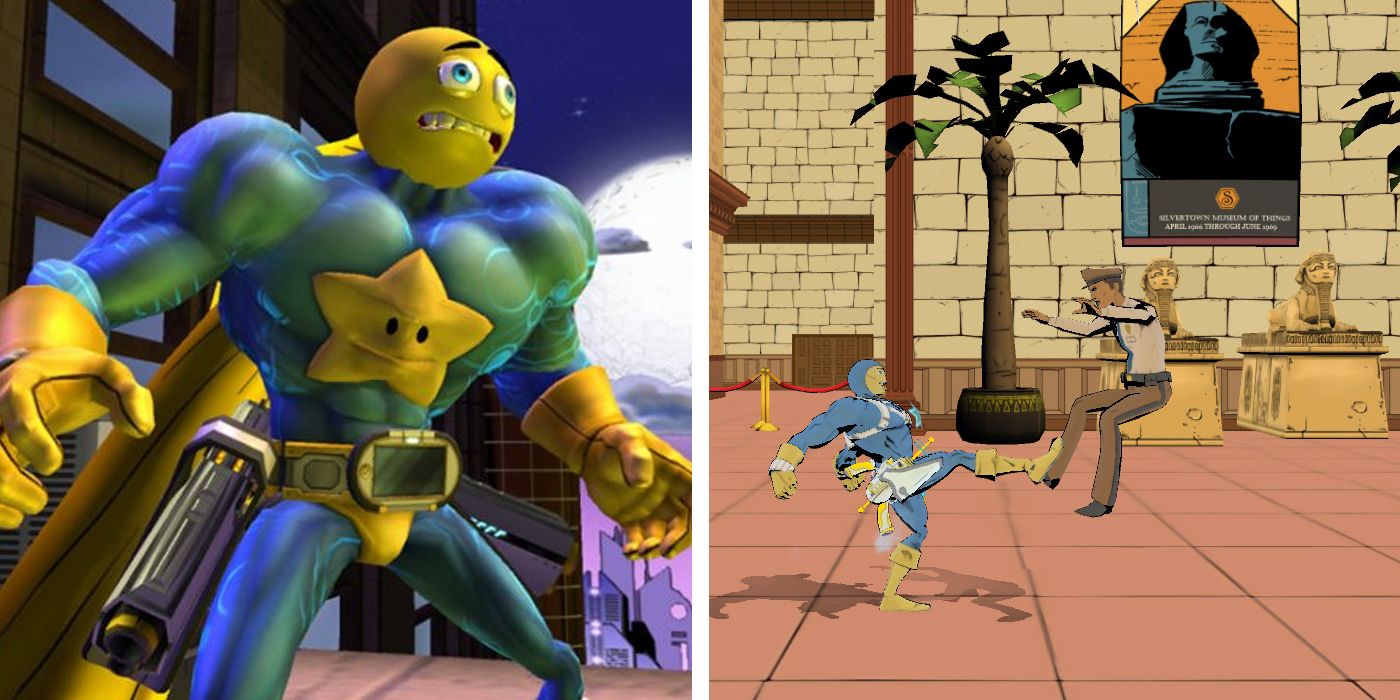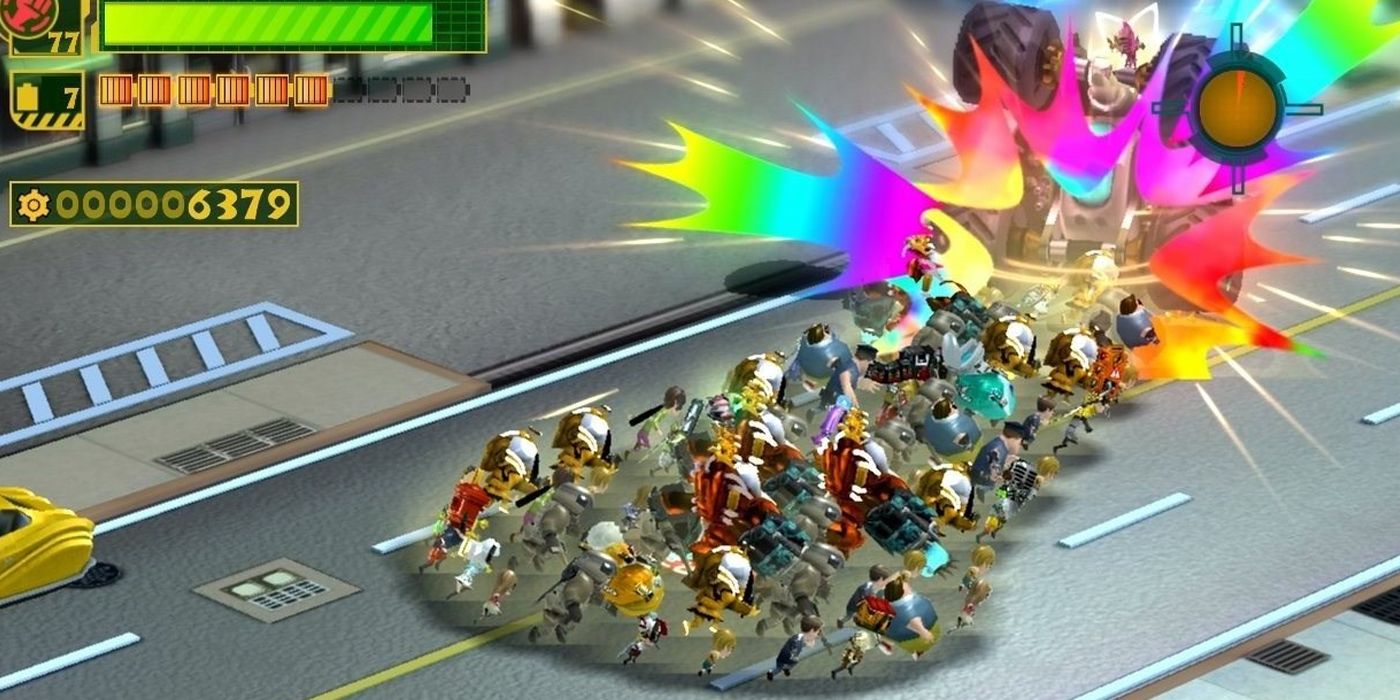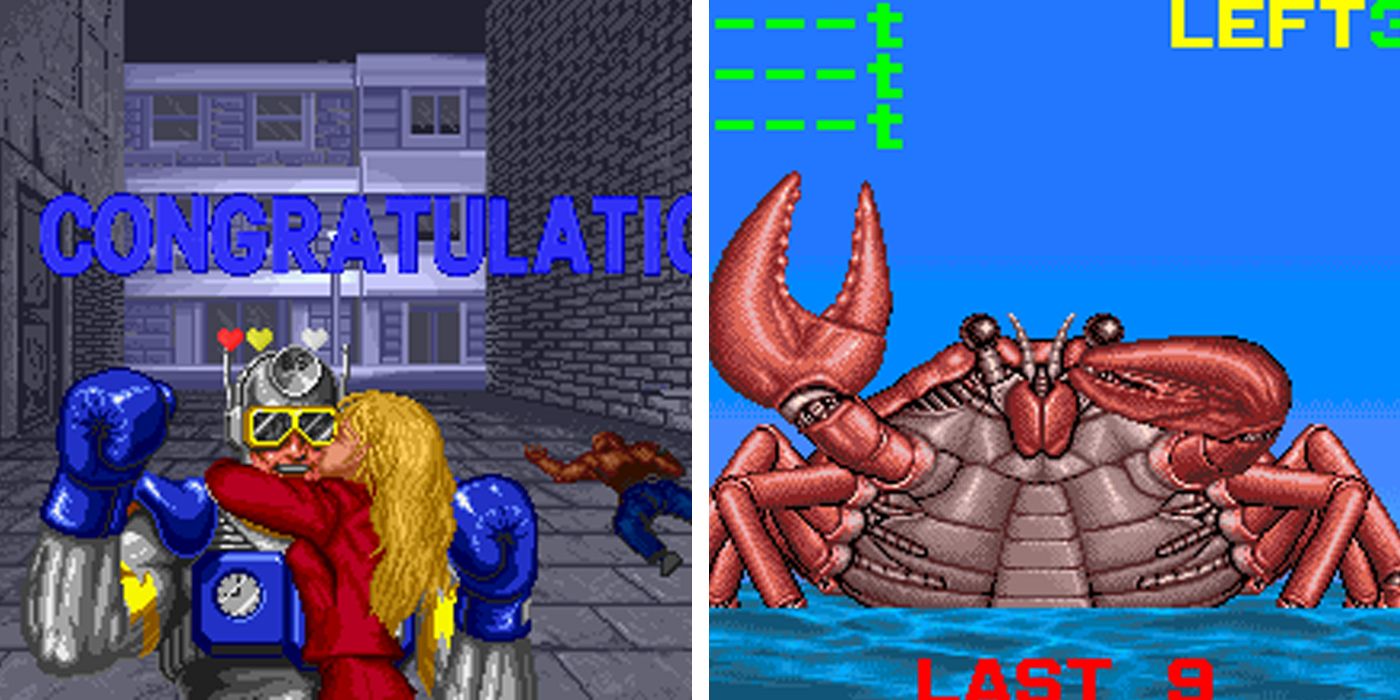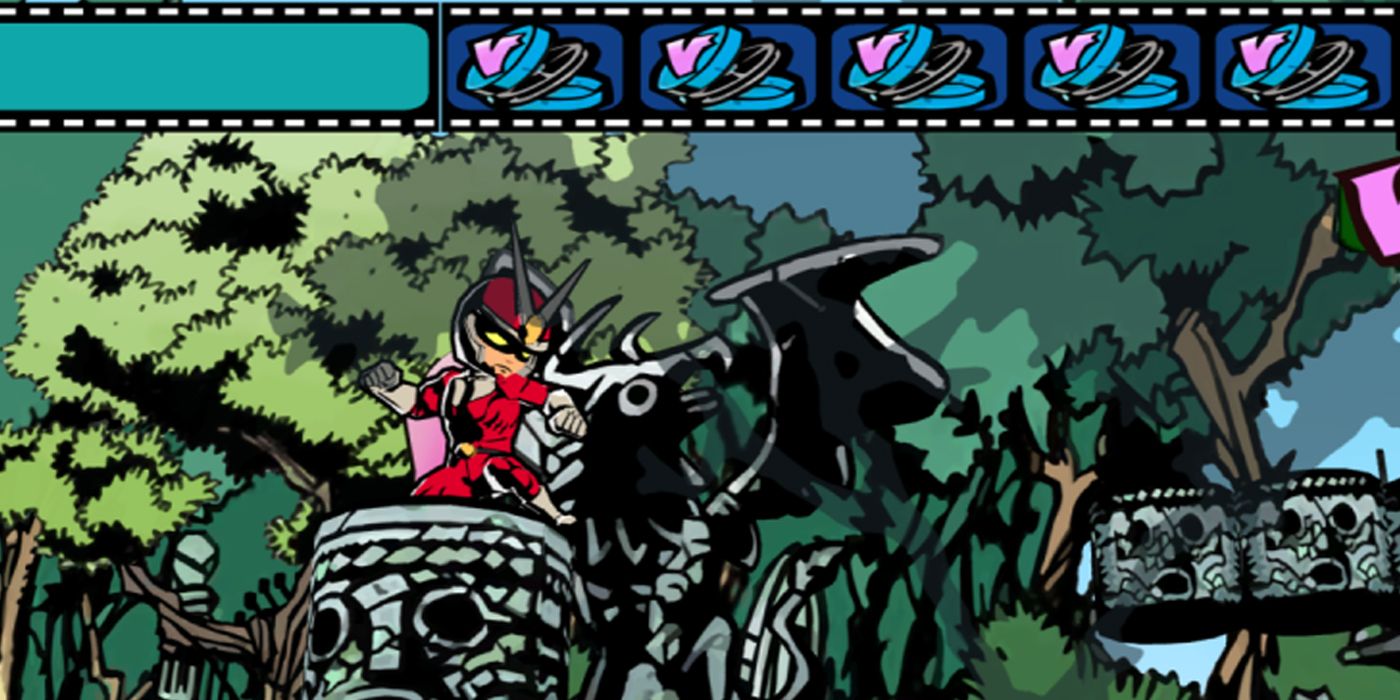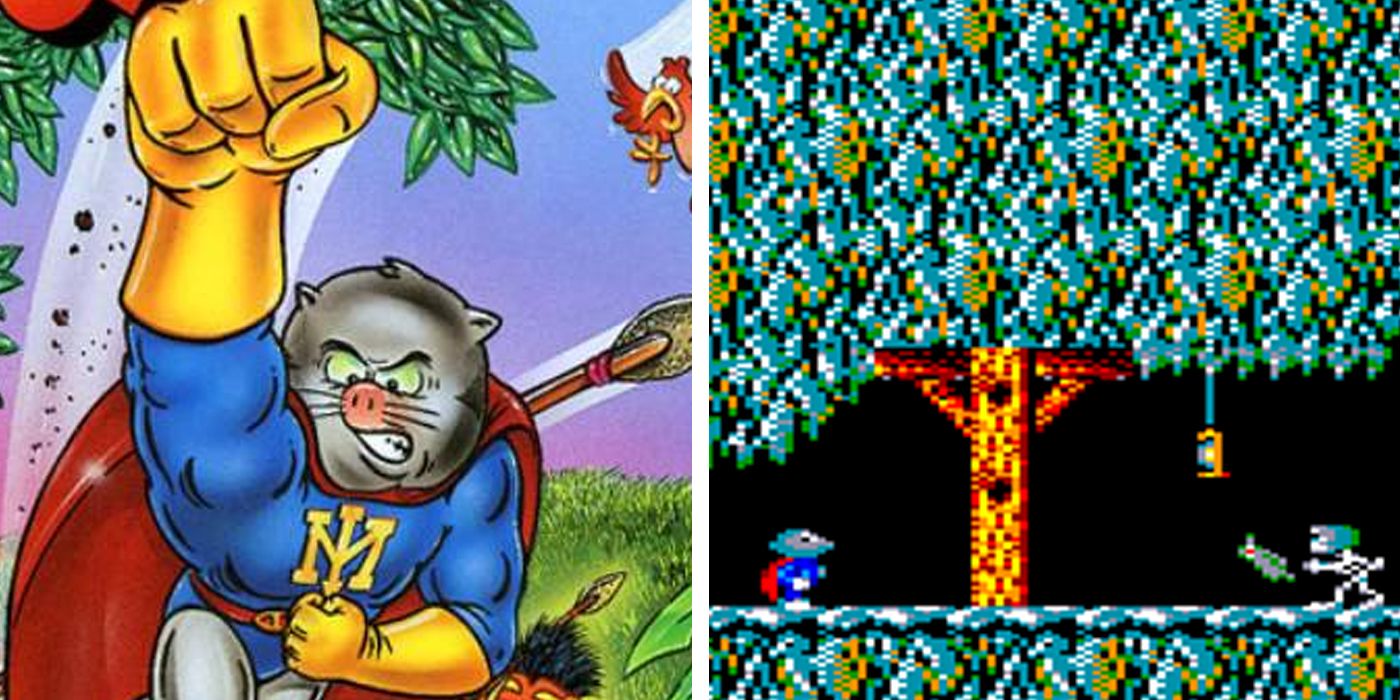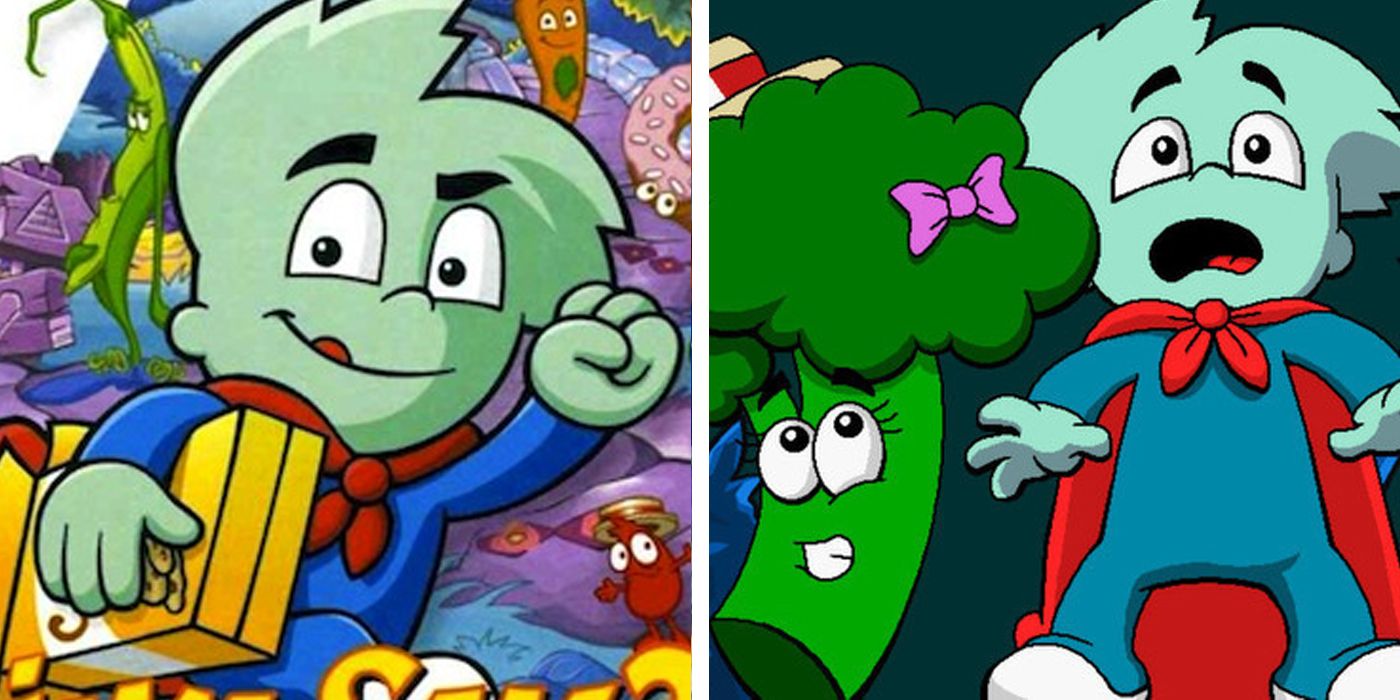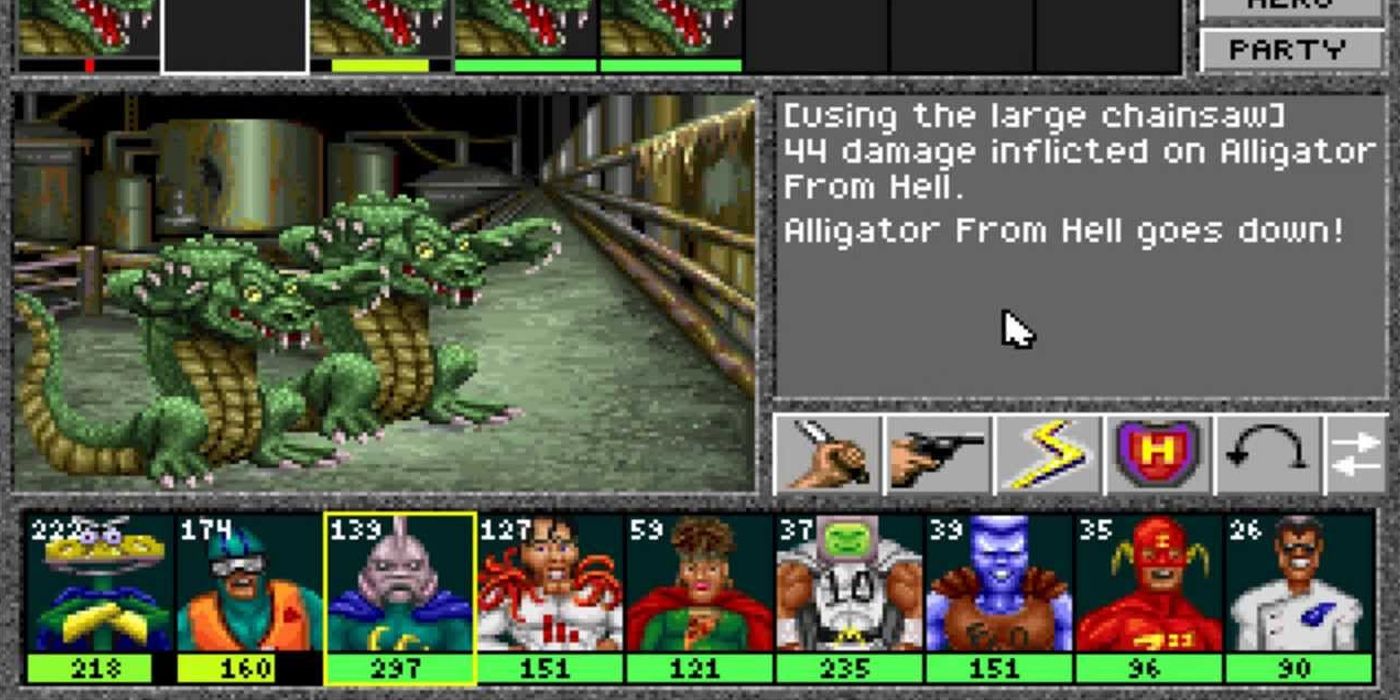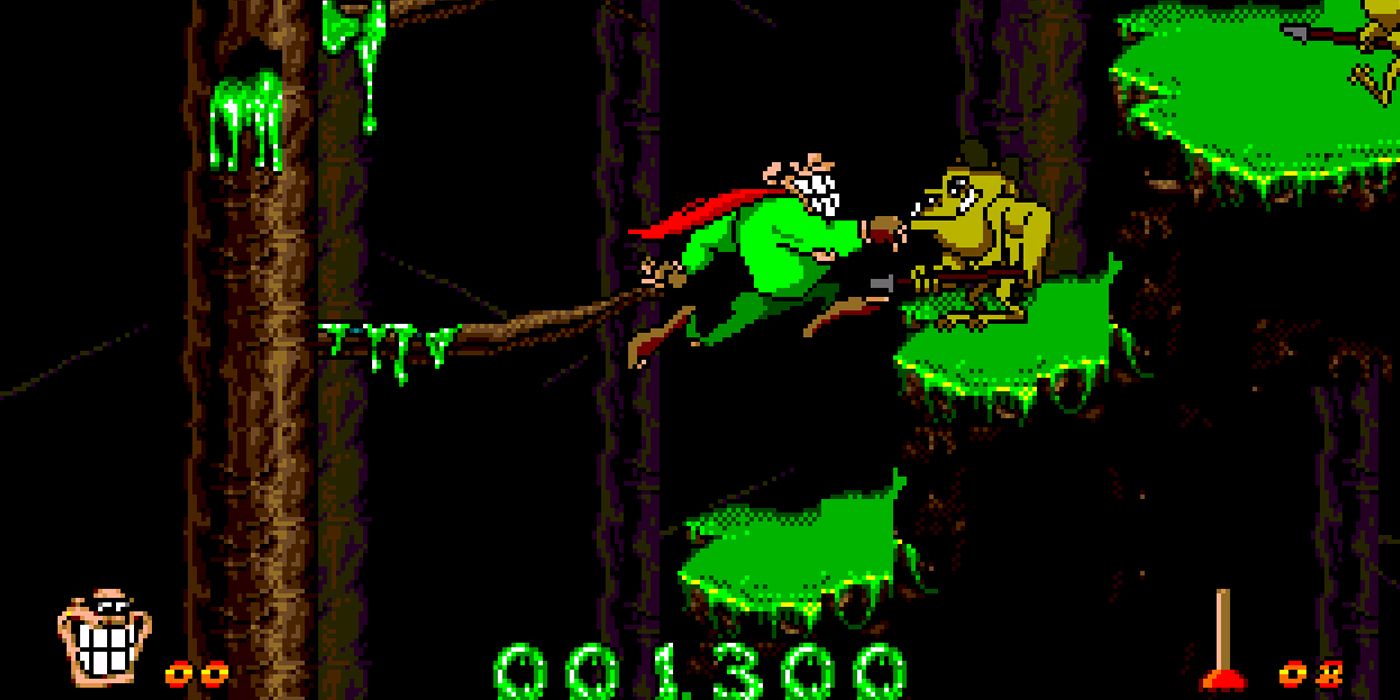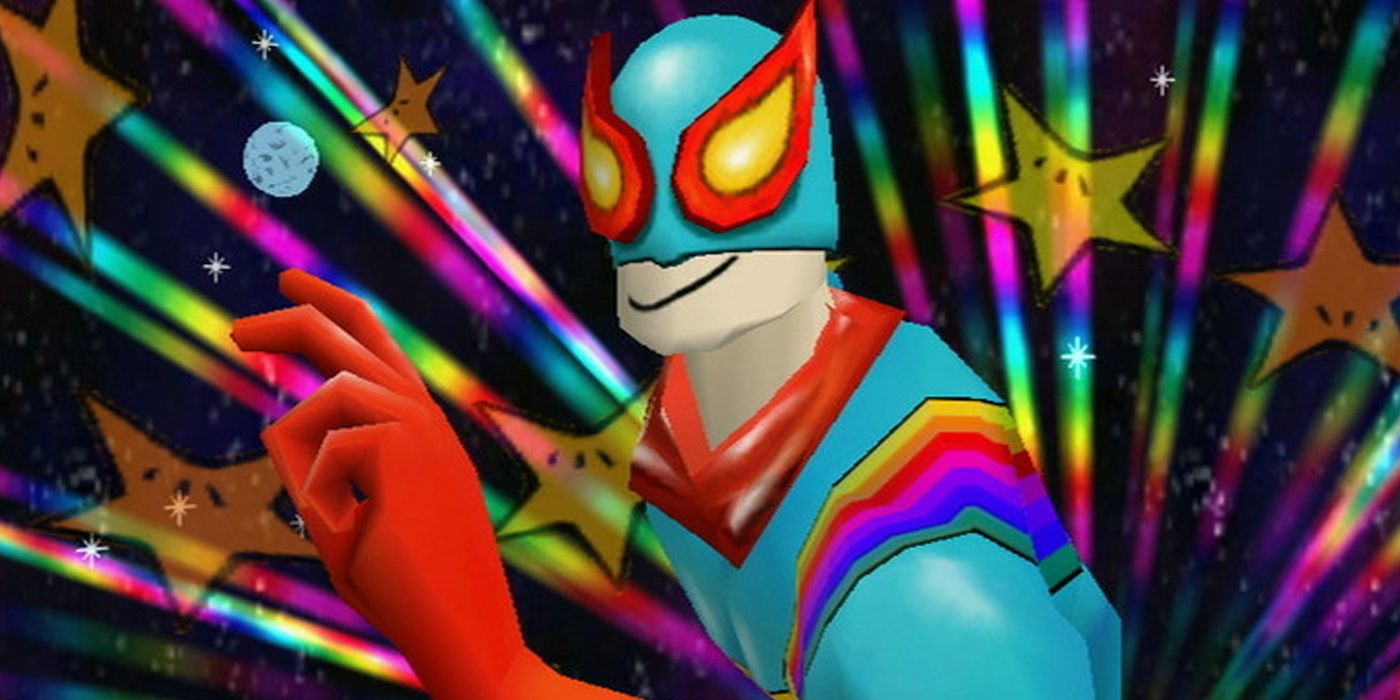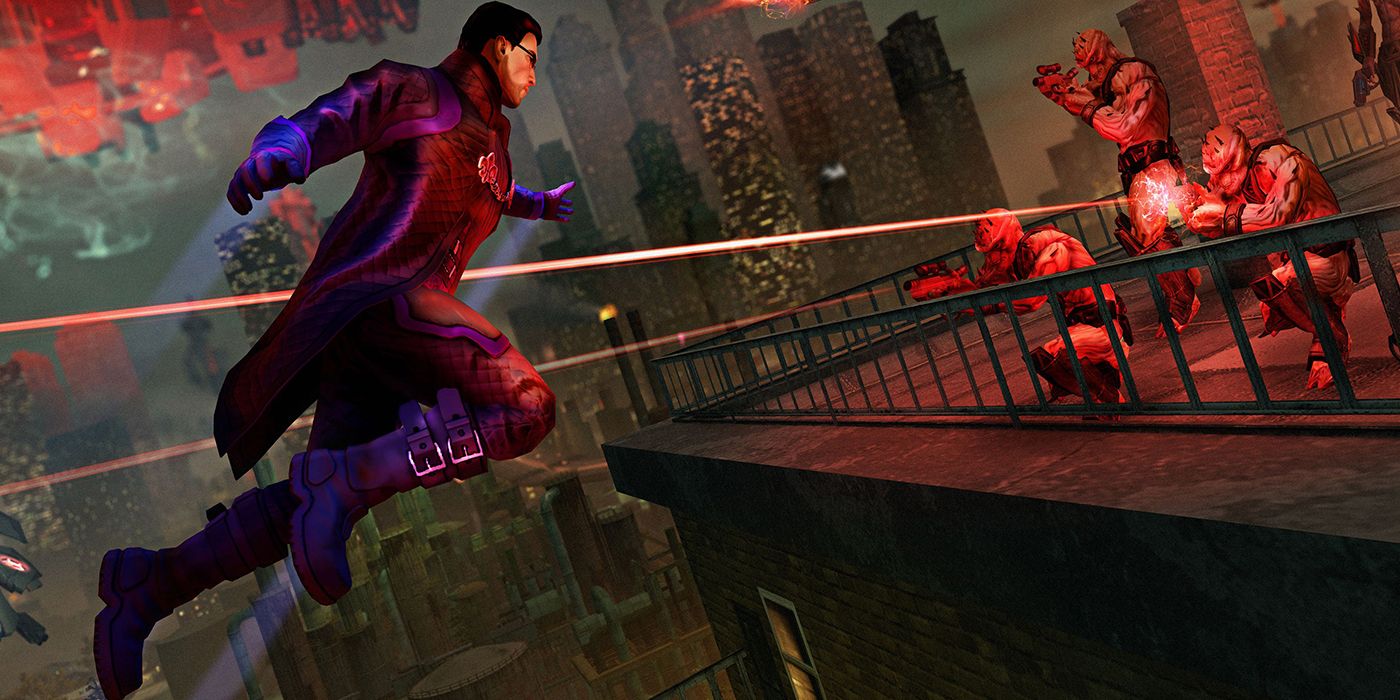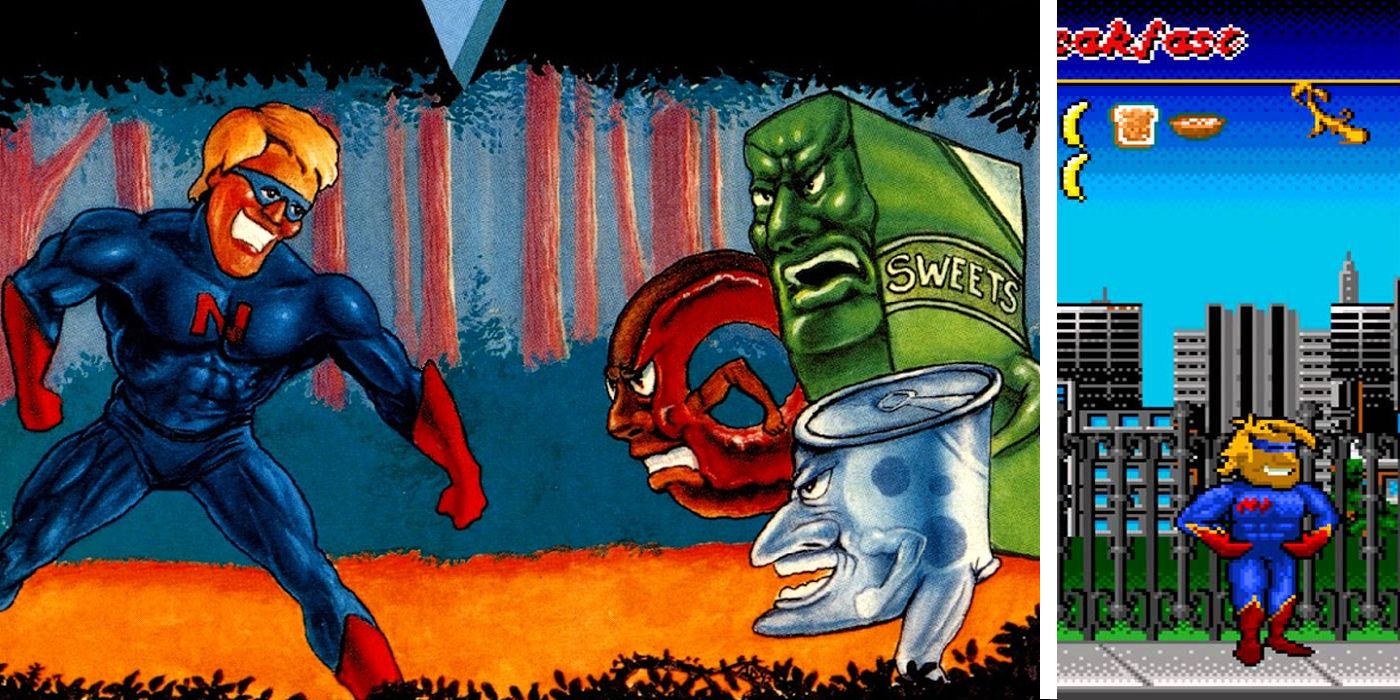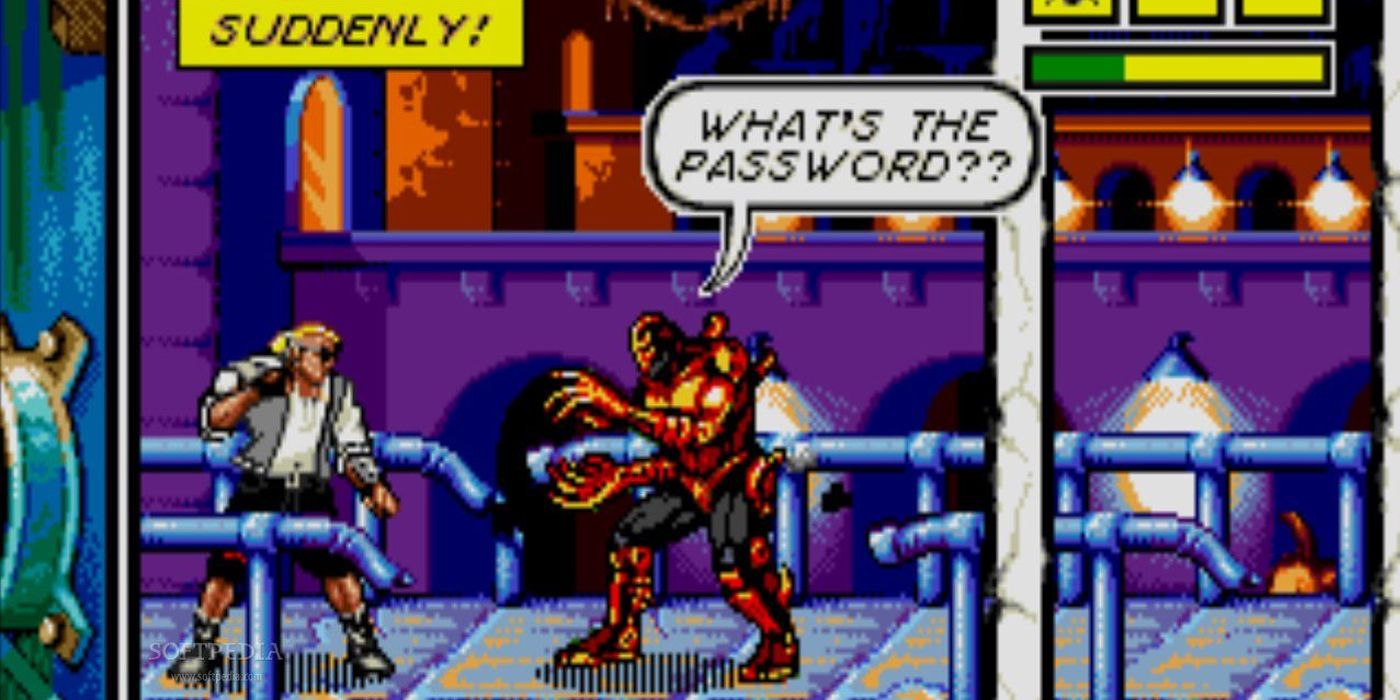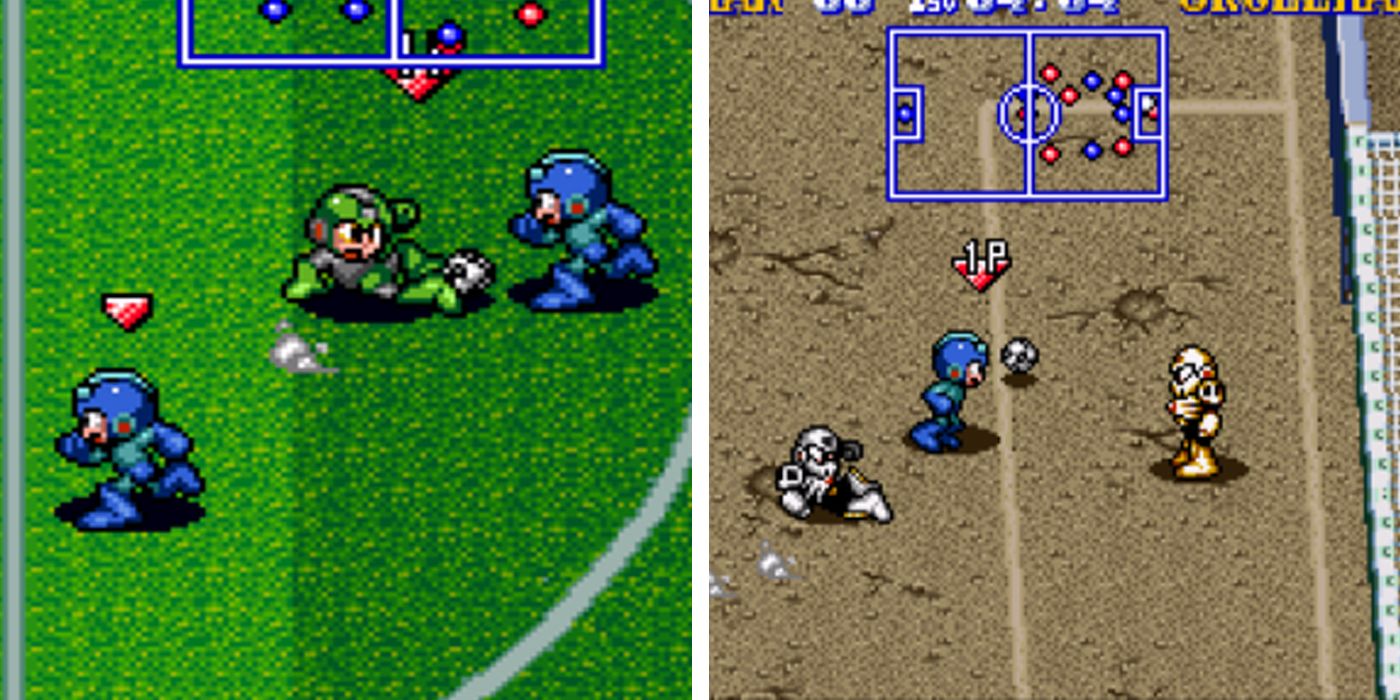Most superhero video games feature established characters and familiar activities like web-swinging or causing careless property damage. While most superhero games don’t get anywhere near the weirdness of 1990s' Vertigo Comics, some can make Marvel Comics’ psychedelic cosmic epics of the 1970s seem tame by comparison.
RELATED: Digital Justice: 15 DC Comics Video Games You Forgot Existed
Now, CBR is taking a look back at some of the weirdest superhero games ever. Since we’ve already looked at games based on major and minor comic characters, we’ll be focusing on games starring heroes who debuted in the world of video games in no particular order. While some of these characters might not seem like superheroes at first glance, they embrace the trappings of the genre like super-powers, costumed alter egos or rogues galleries of villains. This list also includes odd games that offer a reflection of the superhero genre or comic books in general.
15 CAPTAIN COMMANDO
While most gamers were probably introduced to Captain Commando through one of his appearances in a Capcom fighting game like 1998’s “Marvel vs. Capcom,” the character has been around since 1986. Captain Commando’s beginnings were in North American manuals for Capcom-produced games. With a reverse-engineered portmanteau for a name, the Captain served as the company’s mascot as he went through different looks in the late 1980s. In 1991, Capcom redesigned the Captain one more time and gave him his own arcade game with “Captain Commando.”
In the side-scrolling beat ‘em up, one-to-four players can take control of the members of the Commando Team, led by the fire-and-energy glove wielding Captain Commando. The team’s other members included an extraterrestrial Mummy Commando named Mack the Knife, a Ninja Commando named Ginzu and Baby Head, an infant who fights in a mech suit of his own design. While the release initially received fairly average reviews, it’s more well-liked today thanks in part to that bizarre roster. The title was eventually released on the Super Nintendo in 1995 and as part of a compilation of titles for the PlayStation 2 and Xbox in 2002.
14 EARTHWORM JIM
While it’s more of a memory today, “Earthworm Jim” was a minor multimedia sensation in the 1990s. After their success making “Teenage Mutant Ninja Turtles” action figures, Playmates Toys wanted to create their own video game-based pop culture franchise. After receiving a sketch of a worm in a battle suit from Doug TenNapel, Shiny Entertainment began work on “Earthworm Jim.”
Released by Interplay Entertainment across platforms starting in 1994, the platformer follows Jim as he fights bizarre enemies like Psy-Crow and Bob the Killer Goldfish, and save Princess Whats-Her-Name. The title embraces its inherently bizarre concept and fills its brilliantly-designed levels with a charming offbeat humor. With its unique art style, fluid animation and inspired gameplay, the game received widespread acclaim and became one of that era’s most beloved titles. “Earthworm Jim’s” success spawned a two-season Saturday morning cartoon, an action figure line and a series of sequels that were increasingly less successful.
13 COMIC JUMPER: THE ADVENTURES OF CAPTAIN SMILEY
After releasing a pair of fairly successful indie games, Twisted Pixel Games offered their “Earthworm Jim” inspired take on offbeat superheroes with “Comic Jumper: The Adventures of Captain Smiley.” Released for the Xbox 360 on the Xbox Live Arcade in 2010, the game follows the self-aware superhero Captain Smiley as he tries to improve his comic book’s failing sales.
In the action platformer, players take control of the smiley-faced hero as he learns the key to higher comic sales through distinct levels based on a fantasy epic, shojo manga and Silver Age superhero titles. In an unusual twist, each of these levels has a drastically different design sense and graphic presentation. Shortly before its release, the title character’s appearance caused a brief controversy with the indie comics publisher Fierce Comics and their character the Maniacal Smile. Despite that, the game was fairly well-liked, with many reviews praising its varied visuals and its fourth wall-breaking humor. Other critics argued that the gameplay suffered from the title’s focus on comedy.
12 WONDERFUL 101
While Nintendo’s Wii U seems destined to be remembered as one of the developer’s less popular consoles, its unique design still gave developers a chance to work with some non-traditional gameplay mechanics. In 2013, PlatinumGames unleashed their new take on the superhero game with “The Wonderful 101.” While most superhero games follow a single character or a small team of heroes, this game lets players control an ever-growing horde of superheroes that swells past the century mark.
With a sense of design that draws from both classic American superhero and Japanese tokusatsu (teams like Power Rangers, etc.) troupes, players take control of members of a team called the Wonderful Ones as they try to repel a Geathjerk alien invasion led by Jergingha. In the third-person title, the human heroes can combine “Voltron”-style into a giant creature called a Unite Morph to take on Galactus-sized threats. Players can design each Unite Morph’s shapes by drawing on the Wii U’s touchscreen. While this gameplay mechanic was met with mixed praise, the overall game was positively-received thanks to its comedic story and fair-but-challenging level of difficulty.
11 SONIC BLAST MAN
Most superhero games feature traditional control schemes built around joysticks and button-mashing, but Tatio’s “Sonic Blast Man” gives players the chance to put on its title character’s gloves. Released to arcades in 1990, gameplay in this first-person adventure was based around a pair of boxing gloves and a quick-drawing punch pad. When players hit the pad, onscreen enemies like armed thugs and a giant crab monster would take damage. Although the arcade cabinet ironically stated that it was “a machine dedicated to peace,” several players were injured while using the machine. Taito ultimately recalled the machine in 1995 and was fined by the Consumer Product Safety Commission.
In 1992, a home version of the game was released on the Super Nintendo. This version of the game was a fairly standard side-scrolling brawler. In bonus levels inspired by the arcade version, players have to charge the characters strength by repeatedly hitting the D-pad’s buttons in a circle. The console version of the game received mixed reviews and a 1994 sequel that remains unreleased in the United States.
10 VIEWTIFUL JOE
While games like “Comic Jumper” use game mechanics inspired by superhero comic books, Capcom’s “Viewtiful Joe” stars a superhero built around movie special effects. Released for the GameCube in 2003 and PlayStation 2 in 2004, this 3D side-scrolling beat ‘em up follows Joe, a superhero movie buff who gets sucked into Movieland and becomes the tokusatsu-inspired Viewtiful Joe with the aid of the aging hero Captain Blue.
In the game, players control Joe as he tries to rescue his girlfriend Silvia and stop a group of villains called the Jadow from escaping into the real world. With a film strip representing his available VFX Power, Joe can move in “bullet time” and use other special effects-based powers. The title was widely praised and a commercial success which spawned a handful of sequels and an anime series. Joe also appeared in Archie Comics’ “Worlds Collide” crossover and a few Capcom fighting games that include 2011’s “Marvel vs. Capcom 3: Fate of Two Worlds” and could include the upcoming “Marvel vs. Capcom: Infinite.”
9 IMPOSSAMOLE
From characters like “Captain Carrot and the Amazing Zoo Crew” to Rocket Raccoon, animal superheroes are nothing new. Gremlin Graphics’ Monty Mole stands out from other animal heroes since he was already an established figure before donning a cape and tights. In 1984, Monty Mole debuted in “Wanted: Monty Mole” as a coal-collecting miner before becoming the company’s mascot and appearing in five subsequent games. In 1990, Gremlin and Core Design’s final Monty adventure saw the creature gain a super-powers in “Impossamole” for the Commodore 64, TurboGrafx-16 and a few other systems
In the action platformer, players control Monty’s alter ego, Impossamole, as he tries to recover the pieces of a lost alien scroll and defeat the villainous Vlarg. Like “Mega Man,” each of the game’s first few themed levels could be completed in any order before the final boss stage. While it’s largely forgotten today, the title was moderately well-reviewed upon release.
8 PAJAMA SAM 3
Originally billed by developer Humongous Entertainment as “the world’s youngest superhero,” Pajama Sam starred in a hugely successful series of children’s educational games starting in the late 1990s. In the point-and-click series, players control Pajama Sam, the heroic alter ego of a young boy who learns life lessons through a series of “Calvin and Hobbes”-esque adventures. While all of these games feature bizarre adventures, nothing tops 2000’s “Pajama Sam 3: You Are What You Eat from Your Head to Your Feet.”
In this game, players control Pajama Sam as he tries to make peace between warring factions of junk food and vegetables on Mop Top Island. Although the game is theoretically supposed to teach children about a balanced diet, the “Alice in Wonderland”-esque adventure sees Sam thrown into Candy Cane Jail and rescuing delegates for a peace conference. While most of the games in the Pajama Sam series received positive reviews, this game was heralded for its surprisingly complex storyline and animated cut scenes.
7 SUPERHERO LEAGUE OF HOBOKEN
While characters like the Tick have endured for decades by making good-natured fun of superheroes, Legend Entertainment’s “Superhero League of Hoboken” excelled upon its release but failed to leave a lasting impression. Released for DOS in 1994, the game takes place in a post apocalyptic United States where nuclear war has given most of the remaining population bizarre super-powers. While some like the evil Dr. Entropy try to use their powers for personal gain, the Superhero League of Hoboken tries to restore civilized order.
In the role-playing game, players control Crimson Tape, who has the power to create organized charts, as he leads the League in their battle to restore order. Over the course of the game, players strengthen the League and are joined by new members like rust-causing Oxide Man and Mademoiselle Pepperoni, who’s able to see through pizza boxes. The game’s mix of humor with first-person exploration and turn-based combat earned it high praise when it was released, with a few awards calling it one of the best games of 1994.
6 BOOGERMAN: A PICK AND FLICK ADVENTURE
As several entries on this list show, superhero satires have really had a chance to shine on video game consoles. While most straightforward superhero games star characters from Marvel or DC, these satires have given developers a chance to follow their creative muses with outlandish original characters. Interplay Entertainment’s “Boogerman: A Pick and Flick Adventure” is a perfect example of the kinds of things major superheroes just can’t do.
Released on the Sega Genesis in 1994 and on Super Nintendo in 1995, this side-scrolling platformer follows its titular hero as he sneezes his way through a pun-filled adventure. The title’s levels were defined by neon green slime and gross-out toilet humor that was a brilliant match for its adolescent target audience. Despite its purposefully disgusting trappings, the game was a solid platformer that received mostly positive reviews. Along with Earthworm Jim, Boogerman appeared in Interplay’s high-selling fighting game “ClayFighter 63 & 1/3” in 1997. Although a remaster of the game was released in 2008, an attempt to fund a sequel through Kickstarter fizzled out in 2013.
5 CAPTAIN RAINBOW
In 2014, the Michael Keaton-starring “Birdman” earned a slew of awards for its portrayal of an actor defined by his role as a superhero. Six years earlier, Skip Ltd. and Nintendo covered the same thematic ground to drastically different results with 2008’s “Captain Rainbow” for the Wii. Released exclusively in Japan, this game followed Nick, an actor whose tokusatsu show, “Captain Rainbow,” has been hemorrhaging viewers.
In the third-person game, players control Nick and his alter-ego Captain Rainbow as they navigate Mimiin Island, a land filled with Kirarin Crystals that can make wishes come true. On the island, Nick comes across once-popular Nintendo characters like “Super Mario Bros 2’s” Birdo and “Punch Out!’s” Little Mac. As Nick and the yo-yo-wielding Captain Rainbow, the player must help these other characters out before making their own wish. Although the game received fairly positive reviews, it was a commercial flop and was never localized into any English market.
4 SAINTS ROW IV
In 2006, Volition and THQ’s “Saints Row” followed a gang leader in a solid open world crime game that could sit comfortably next to “Grant Theft Auto.” While other crime games strived to be more realistic or cinematic, the Saints Row franchise became an exercise in escalation, with each game more ambitious than the last. By 2013’s “Saints Row IV,” that same protagonist had been elected President of the United States and was given super-powers in order to help fight off an alien invasion.
Released by Volition and Deep Silver for the PC, PlayStation 3 and Xbox 360, the game gives players the opportunity to wreak havoc in an alien-created virtual reality that’s filled with the rogues gallery of former “Saints Row” enemies and references to famous science fiction games and films. In the simulation, the player has telekinesis and a handful of elemental powers that later become available in the game’s real world. The title was a commercial and critical success, with reviews praising its over-the-top humor and robust character-creation engine.
3 CAPTAIN NOVOLIN
By any metric, “Captain Novolin” is one of the most peculiar games on the Super Nintendo. The title was funded by the Danish pharmaceutical company Novo Norodisk and released by Raya Systems as part of their educational line of games. It was meant to teach children about diabetes and healthy living in a release that tows the line between public service announcement and corporate advertisement.
Developed by Sculptured Software, the 2D side-scroller lets players control its titular hero as he battles junk food-shaped aliens and tries to keep his glucose level in a safe zone by eating healthy meals. The game also features trivia questions and a special feature to help diabetic players time insulin injections. Contemporary studies reportedly said that the game largely succeeded in its goal of helping children understand and explain diabetes. Despite its intentions, the game has received largely negative reviews from the gaming press that criticized its graphics and poor, unresponsive controls.
2 COMIX ZONE
While comic books were still seen as a novelty by the larger world of pop culture in the 1990s, Sega’s “Comix Zone” embraced the trappings of the field in a way few works did outside of the medium. Released for the Sega Genesis in 1994, the game follows Sketch Turner, a comic book artist and rock musician who looks like a cross between Poochie and Adam X, The X-Treme.
After being struck by lightning, Sketch is sucked into his own comic book, also called “Comix Zone,” where he must battle his own creations in order to save the world. In the 2D side-scrolling brawler, players control Sketch as he speaks in word balloons, maneuvers through comic panels and rips off pieces of the page to throw at his own creations. While some contemporary reviews criticized its repetitive gameplay and slightly-too-hard difficulty, the title received considerable praise for its graphics and design. More recently, the game’s reputation has grown due to its faithful reflection of the 1990s cultural and comics zeitgeist.
1 MEGA MAN SOCCER
With countless appearances in other media and a rogues gallery of villains on par with Batman and Spider-Man, Mega Man might be the most famous superhero from the world of video games. While most of the character’s appearances have featured side-scrolling platforming action, some of the Capcom icon’s other games have placed him in other odder scenarios like kart racing. In 1994, Mega Man embarked on his strangest adventure yet with Capcom and Sun L’s “Mega Man Soccer” on the Super Nintendo.
Depending on the game mode, players play soccer with either a team of eight identical characters or eight different characters from the world of Mega Man. For the most part, the game operates like a standard soccer game, but each robot features a special move that can temporarily stun anyone who touches the ball, including the goalie. Although this bizarre game is technically in Mega Man continuity, it received mixed reviews that criticized its poor controls and choppy gameplay while praising its sheer absurdity.
Stay plugged in to CBR for all the latest in superhero gaming news. And be sure to let us know what your favorite weird superhero game is in the comments below!

